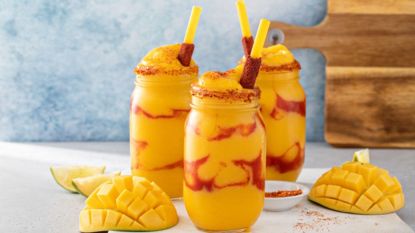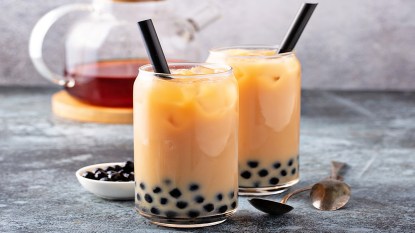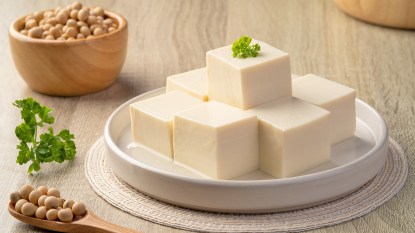Is Bottled Water Really Better for You Than Tap Water?
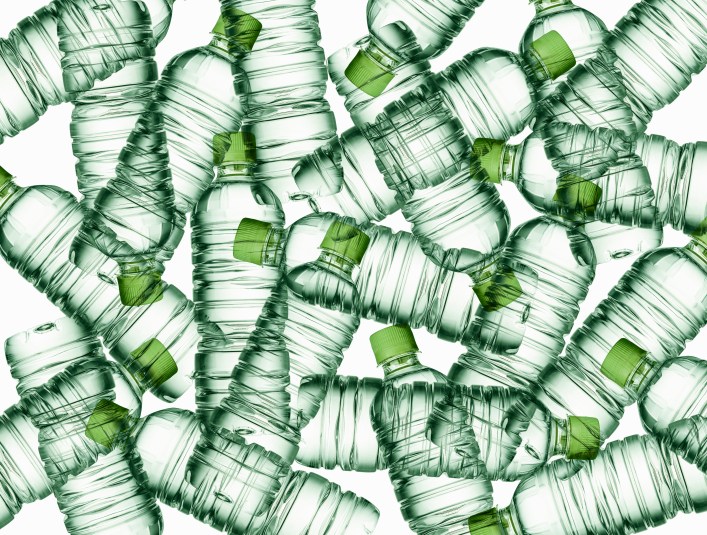
If beverages were high schoolers, bottled water would definitely be the head cheerleader. Since 2016, Americans have purchased more bottled water than soda, making bottled water the most popular beverage (by volume) in the United States, according to the Beverage Marketing Association. Clearly, the much-publicized health benefits of drinking water have influenced the nation’s buying habits, which is important considering everyone should drink plain water every day to stay healthy, according to the Centers for Disease Control and Prevention (CDC). Although the oft-cited suggestion is that adults should drink six-to-eight 8-ounce glasses of water per day, the exact amount of water you should drink per day depends on your weight (the more you weigh, the more water you should drink); how much you exercise (The American College of Sports Medicine recommends adding 12 ounces of water to your daily intake for every 30 minutes of exercise you do); and whether you are pregnant or breastfeeding, which requires more hydration.
But the main point is simple: Drinking water is good for you. First, it has zero calories, so it helps reduce calorie intake and manage body weight. It also prevents dehydration, a condition that can lead you to feel tired, light-headed, or confused, and which increases the risk of becoming constipated or developing kidney stones. But a question remains: Is bottled water better for you than tap water? After all, what could be easier than turning on your tap and filling a glass with free H2O?
Bottled Water vs. Tap Water: The Safety Showdown

(Photo Credit: Getty Images)
It really comes down to personal preference when deciding between bottled water and tap water, says Cody Cook, PhD, president and chief medical scientist of HTWO Beverage Company and founder of MitoGene Beverage Company.
“Bottled water and tap water are generally comparable in terms of safety,” Cook says. The U.S. Environmental Protection Agency (EPA) regulates tap water, and the U.S. Food and Drug Administration (FDA) oversees bottled water, using similar standards to ensure safety. Bottled water goes through a filtration process to eliminate specific contaminants and to improve color, taste, and smell. Common minerals in bottled water include sodium chloride, calcium chloride, magnesium chloride, sodium bicarbonate, potassium bicarbonate, and magnesium sulfate, but these are typically present in trace amounts and are considered safe. One big difference between bottled water and tap water is that municipal water needs to contain fluoride and chlorine.
EPA regulations for tap water, however, stop once the water goes from the city’s source to a house, office, or apartment building, warns Christopher R. Ashley, PhD, director of commercialization at HaloSource, a clean water technology company that provides safe drinking water to more than 10 million people in China, India, and Latin America.
“As soon as water leaves the distribution line, it is the responsibility of the owner to maintain the quality of plumbing and piping,” Ashley says. “This means an individual’s municipality may have a water supply that is free from chemical or biological contamination, but the water coming from the tap may still be at risk. For example, homes built before 1986 may contain pipes, fixtures, and/or flux that contains lead and is therefore a potential hazard.”
Ashley also points out that the EPA may not reach many small or rural communities to test regularly. Thus, if a small, underfunded municipality learns of an infraction, the town may not have the budget to fix it right away. Still, all residents have the right to access the most recent water quality report for their city or district. This is usually produced every year and flags any numbers above the EPA’s limits. If you’re concerned about your tap water, contact your municipality and request a copy of the most recent report.
Additionally, the tap water in your home may differ from free water in public places, such as water fountains in parks, schools, and playgrounds. “Just as many communities lack the resources to test and fix municipal water sources, there is also a lack of funding to replace older, potentially damaged infrastructure in these taps away from home,” Ashley says. Cases of elevated levels of lead in school drinking fountains continue to be documented. Reports released in 2018 revealed elevated lead levels in water samples taken from several schools in Montgomery County, Maryland. All 205 schools in the county are being tested throughout 2018, and at the time of publication, more than half of the schools tested showed elevated levels of lead in their drinking water.
Concerned parents who don’t know how safe the water is in their school’s drinking fountains may want to send their children to school with bottled water to ensure it is lead-free.
How long does bottled water last?
The FDA doesn’t require bottled water to have an expiration date, according to the International Bottled Water Association, and bottled water has an indefinite shelf life when manufactured and sealed correctly, according to a 2002 article in the FDA’s Food Safety Magazine. The exact shelf life of bottled water depends upon the way it was packaged, the use of purification processes like reverse osmosis or distillation, the type of materials used for packaging (plastic bottles versus aluminum cans, for example), and the use of sanitizing processes that often include ozone or other chemicals. As a good manufacturing practice, bottled water should be labeled with an expiration date that is dictated by the methods with which it was produced. The expiration date is an indicator of the water’s quality, however, not safety. The water’s safety depends on how each individual bottled water product has been stored and transported, and whether it was exposed to extreme conditions, such as high temperatures.
New Jersey is the only U.S. state to require an expiration date on bottled water. However, the two-year expiration date law was repealed several years ago, following a ruling that no scientific evidence supported this requirement.
So ultimately, how long is bottled water good for? It varies, so always check the expiration date before you drink it. To be on the safe side, discard and replace bottled water that is past its expiration date. Also, according to the FDA, you should always discard bottled water than has an odor regardless of whether it is past its expiration date.
Bottled Water pH
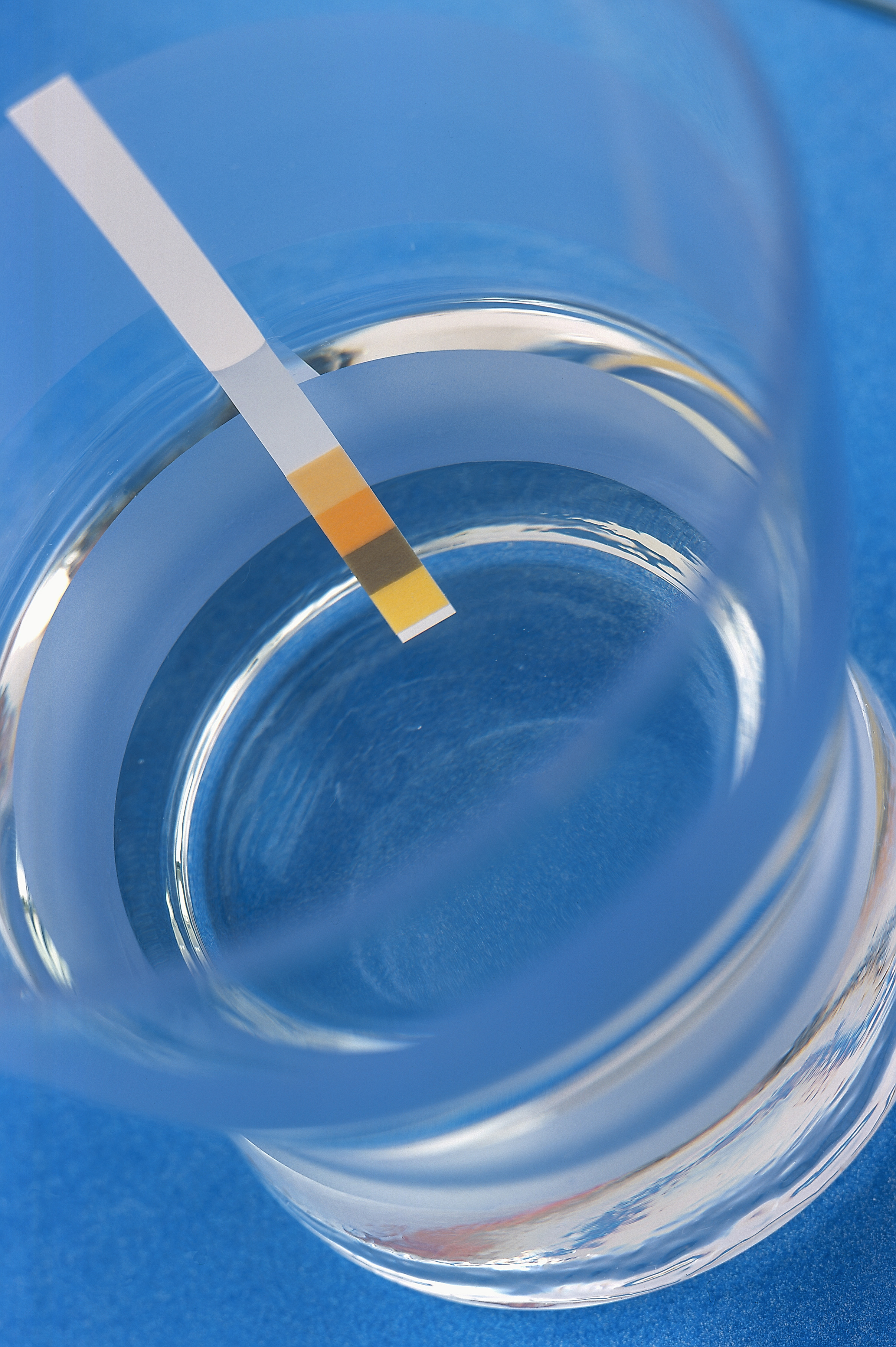
(Photo Credit: Getty Images)
The pH scale measures how acidic or alkaline an aqueous (water-based) substance is. A pH lower than 7.0 is considered acidic, and a pH greater than 7.0 is considered alkaline. Pure water has a pH of 7.0.
“Surface water is generally within a pH range of 6.5 to 8.5, while a pH range of 6.0 to 8.0 is often the norm for groundwater,” Cook explains.
The pH levels for bottled water vary. A 2015 study published in the Journal of Dental Hygiene compared 11 different brands of bottled water and found that the pH values ranged from 5.16 to 10.38, with over half of them ringing in between 6.0 to 8.0. Purification processes and additives can affect bottled water pH.
“Natural mineral waters tend to have pH values slightly higher than neutral while certain spring waters or reverse osmosis bottled water tends to have pH levels lower than neutral,” Ashley says. “Some water may even undergo chemical processing to artificially raise or lower the pH to obtain a desired effect.”
For example, some brands of bottled water have developed higher alkaline water with a pH between 8.0 and 10.0, citing various health benefits. A 2012 study published in the Annals of Otology, Rhinology & Laryngology indicated that alkaline water with a pH of 8.8 can help soothe acid reflux because the higher level of pH kills pepsin, an enzyme that helps break down food proteins and is a primary cause of acid reflux.
The level of pH is a poor indicator of whether water is healthy, however, because it says nothing about the source, electrolytes, or contaminants, Ashley says. Naturally sourced or lab-produced water could be contaminated with several times the allowable limits of lead, arsenic, and chromium and still maintain a pH between 6.0 and 8.0.
Does bottled water go bad?
The answer to the common question “Can bottled water go bad?” is a little more nuanced than a simple “yes” or “no.” If you’re wondering if bottled water goes bad, you need to first differentiate between the water itself and its packaging. Bottled water can go bad over time because of the plastic or aluminum materials used in the packaging. When these materials expire, they start to leach chemicals into the water. Whether or not an expired package causes the water to become toxic depends on the specific situation, but it can at least taint the taste of bottled water, Cook says.
To keep bottled water clean and fresh for as long as possible, the International Bottled Water Association recommends storing it in a cool place (room temperature or lower), out of direct sunlight, and away from solvents and chemicals such as gasoline, paint thinners, household cleaners, and dry cleaning chemicals.
Is bottled water distilled, and is that good enough?
Some bottled water manufacturers use distillation as their purification method instead of processes like reverse osmosis, but the answer to “Is bottled water distilled?” is not always yes. The distillation process, which involves evaporating all liquid water and recondensing it in a separate chamber, helps purify water — but it is a very energy-intensive process.
“Distillation works quite well for purifying out microbiological contaminants as well as heavy metals like lead, arsenic, etc., but it is not very effective at removing pesticides, pharmaceutical wastes, or other synthetic contaminants,” Ashley says. “Bottled water that has been distilled will likely undergo additional carbon filtration to remove these other residuals. Furthermore, most bottled water that has been distilled will also have minerals added afterwards to improve the taste and aid in hydration.”
Bottom Line: Is bottled water safe?
Ashley and Cook agree that bottled water is safe for human consumption if it is manufactured and packaged under sanitary conditions. “The ability to provide water in a bottled format is one solution that can relieve individuals who don’t have access to a reliable water source,” Cook says.
The answer to “Is bottled water safe?” depends on several factors, but generally speaking, bottled water is safe because it goes through the same rigorous testing that any other food (or drug) does. The FDA requires that all bottled water producers process, bottle, and store their products under sanitary conditions, and use plastics that are safe for food contact (aka do not leach anything into the water). The FDA mandates the use of a variety of quality-control processes in every facility to ensure that there is no biological or chemical contamination, and both the water source and the final products undergo continual testing.
But be aware: The regulations for both tap water and bottled water change over time, and are often slow to react to new contaminants, such as micro-plastic particles or new classes of pharmaceutical residuals. “It is important that consumers stay engaged and aware of changes in their water sources and how that can impact personal health,” Ashley says. “For instance, an expecting mother might need to take extra precaution against pharmaceutical contaminants and heavy metals like lead.”
From a safety perspective, there doesn’t seem to be much difference between bottled water and tap water. When making the call, take into account the quality of tap water in your municipality. If you choose bottled water, store it correctly, and always check the expiration date before you drink it. And remember, whether you choose bottled water or tap water, staying hydrated is crucial to maintaining good health.
This article was written by Claire Gillespie.
More From FIRST
11 Best Lumbar Support Office Chairs for a Comfortable Workspace
No, 100-Percent Cotton Tampons Aren’t ‘Safer’ for You
Everything You Need to Know About Allulose, The Sugar Substitute That’s Having a Moment



